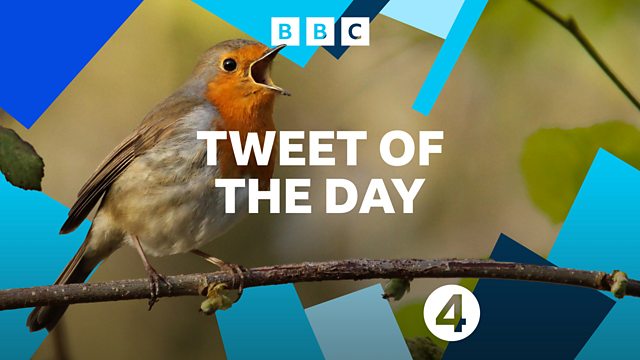Ivory Gull
Chris Packham presents the ivory gull from the northern polar seas.
Tweet of the Day is the voice of birds and our relationship with them, from around the world.
Chris Packham presents the ivory gull from the northern polar seas. Ivory gulls breed on rocky outcrops and cliffs and has a near-circumpolar distribution, spending most of the year near the edge of the pack ice throughout Arctic Europe, Arctic Russia, Greenland and Canada. They regularly venture farther north than any other bird. The adults are brilliant white with black legs and black eyes; their only splash of colour is on the bill which is a pastel rainbow of blue, green, yellow and pink. At rest they look rather dove-like. Although their colour suggests purity, their tastes are definitely not. Ivory gulls are scavengers. Dead seals or whales will draw them from miles around and those birds which have turned up as rare winter visitors to the UK have often shown an uncanny ability to locate strandline corpses of porpoises, dolphins or seals. Diet aside these are entrancing gulls to watch as they loaf on icebergs or waft angelically over arctic seas.
Last on
More episodes
Previous
Ivory Gull (Pagophila eburnea)
Webpage image courtesy of Steven Kazlowski / naturepl.com
NPL Ref 漏 Steven Kazlowski / naturepl.com
Recording of ivory gull by Stewart D MacDonald & William W.H. Gunn / Ref: ML137334
This programme contains a wildtrack 聽kindly provided by The Macaulay Library at the Cornell Lab of Ornithology; recorded by Stewart D MacDonald & William W.H. Gunn on 8 Jul 1970, at Grise Fjord, Ellesmere Island, Nunavut, Canada.
Broadcasts
- Fri 21 Nov 2014 05:5891热爆 Radio 4
- Mon 14 Dec 2015 05:5891热爆 Radio 4
- Sun 20 Dec 2015 08:5891热爆 Radio 4
- Sun 14 Jun 2020 08:5891热爆 Radio 4
- Wed 7 Jul 2021 05:5891热爆 Radio 4
- Mon 22 Aug 2022 05:5891热爆 Radio 4
Podcast: Planet Puffin
Try this new podcast
Five stories of birds and birdsong are told by the people inspired by them.
Podcast
-
![]()
Tweet of the Day
Discover birds through their songs and calls. 265 programmes of 90 seconds, over a year



